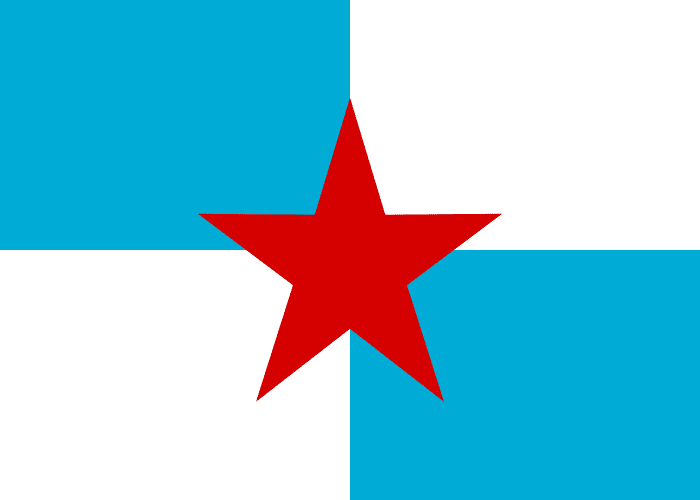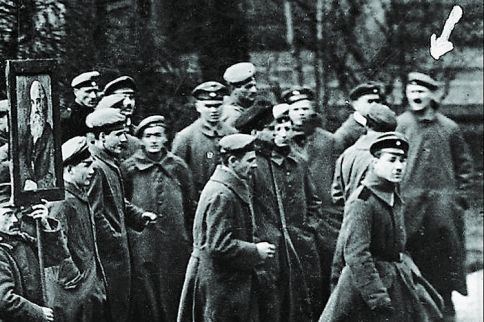Government Socialist republic 12 April – 3 May Eugen Leviné Date formed 1919 | Established 6 April 1919 | |
 | ||
Bavarian soviet republic survives
The Bavarian Soviet Republic (German: Bayerische Räterepublik) was the short-lived attempt to establish a socialist state in the Free State of Bavaria during the German Revolution. It took the form of a workers' council republic. Its name is variously rendered in English as the Bavarian Council Republic or the Munich Soviet Republic (the German name Räterepublik means a republic of councils or committees; council or committee is also the meaning of the Russian word soviet) after its capital of Munich. It sought independence from the also recently proclaimed Weimar Republic.
Contents
- Bavarian soviet republic survives
- Kurt Eisners bloodless revolution
- Hoffmann government
- Ernst Toller government
- Eugen Levin government
- Demise
- References

Kurt Eisner's bloodless revolution
On the afternoon of 7 November 1918, the first anniversary of the Russian revolution, Kurt Eisner, a politician of the Independent Social Democratic Party of Germany (USPD) addressed a crowd, estimated to have been about 60,000, on the Theresienwiese (current site of the Oktoberfest). He demanded an immediate peace, an 8-hour workday, relief for the unemployed, abdication of the Bavarian king, King Ludwig III, and Kaiser Wilhelm II, and proposed the formation of workers' and soldiers' councils. The crowd marched to the army barracks and won over most of the soldiers to the side of the revolution. That night, the King went into exile. The next day, Eisner declared Bavaria a "free state" – a declaration which overthrew the monarchy of the Wittelsbach dynasty which had ruled for over 700 years, and Eisner became Minister-President of Bavaria. Though he advocated a "socialist republic", he distanced himself from the Russian Bolsheviks, declaring that his government would protect property rights. For a few days, the Munich economist Lujo Brentano served as People's Commissar for Trade (Volkskommissar für Handel).

Eisner's Independent Social Democrats were defeated in the January 1919 election, coming in sixth. On 21 February 1919, as he was on his way to parliament to announce his resignation, he was shot dead by the right-wing nationalist Anton Graf von Arco auf Valley, who had been rejected from membership in the Thule Society because of Jewish ancestry on his mother's side. This assassination caused unrest and lawlessness in Bavaria, and the news of a left-wing revolution in Hungary encouraged communists and anarchists to seize power.
Hoffmann government

On 7 March 1919, the leader of the majority Social Democratic Party of Germany (SPD), Johannes Hoffmann, formed a coalition government, but was unable to muster political support.
Ernst Toller government

On 6 April 1919, a soviet republic was formally proclaimed. Initially, it was ruled by USPD members such as Ernst Toller, and anarchists like Gustav Landauer, Silvio Gesell, and Erich Mühsam. Toller, a playwright, described the revolution as the "Bavarian Revolution of Love".

His government members were not always well-chosen. For instance, the Foreign Affairs Deputy Dr. Franz Lipp (who had been admitted several times to psychiatric hospitals), declared war on Switzerland over the Swiss refusal to lend 60 locomotives to the Republic. He also claimed to be well acquainted with Pope Benedict XV and he informed Vladimir Lenin via cable that the ousted former Minister-President Hoffmann had fled to Bamberg and taken the key to the ministry toilet with him.
Eugen Leviné government
On Sunday, 12 April 1919, the Communist Party seized power, with Eugen Leviné as their leader. Leviné began to enact communist reforms, which included forming a "Red Army", seizing cash and food supplies, expropriating luxurious apartments and giving them to the homeless and placing factories under the ownership and control of their workers. Leviné also had plans to abolish paper money and reform the education system, but never had time to implement them.
On 30 April 1919, eight men, including the well-connected Prince Gustav of Thurn and Taxis, were accused as right-wing spies and executed. The Thule Society's secretary, Countess Hella von Westarp, was also executed.
Demise
Soon after, on 3 May 1919, remaining loyal elements of the German army (called the "White Guards of Capitalism" by the communists), with a force of 9,000, and Freikorps (such as the Freikorps Epp and the Marinebrigade Ehrhardt) with a force of about 30,000 men, entered Munich and defeated the communists after bitter street fighting in which over 1,000 supporters of the Munich council government were killed. About 700 men and women were arrested and summarily executed by the victorious Freikorps troops. Leviné was condemned to death for treason, and was shot by a firing squad in Stadelheim Prison. Gustav Landauer was beaten and shot by a mob of soldiers.
One notable supporter of the movement was the young artist Georg Schrimpf, then aged 20, who was arrested when the movement was crushed. Other prominent participants were Paul Klee and Hans Richter.
